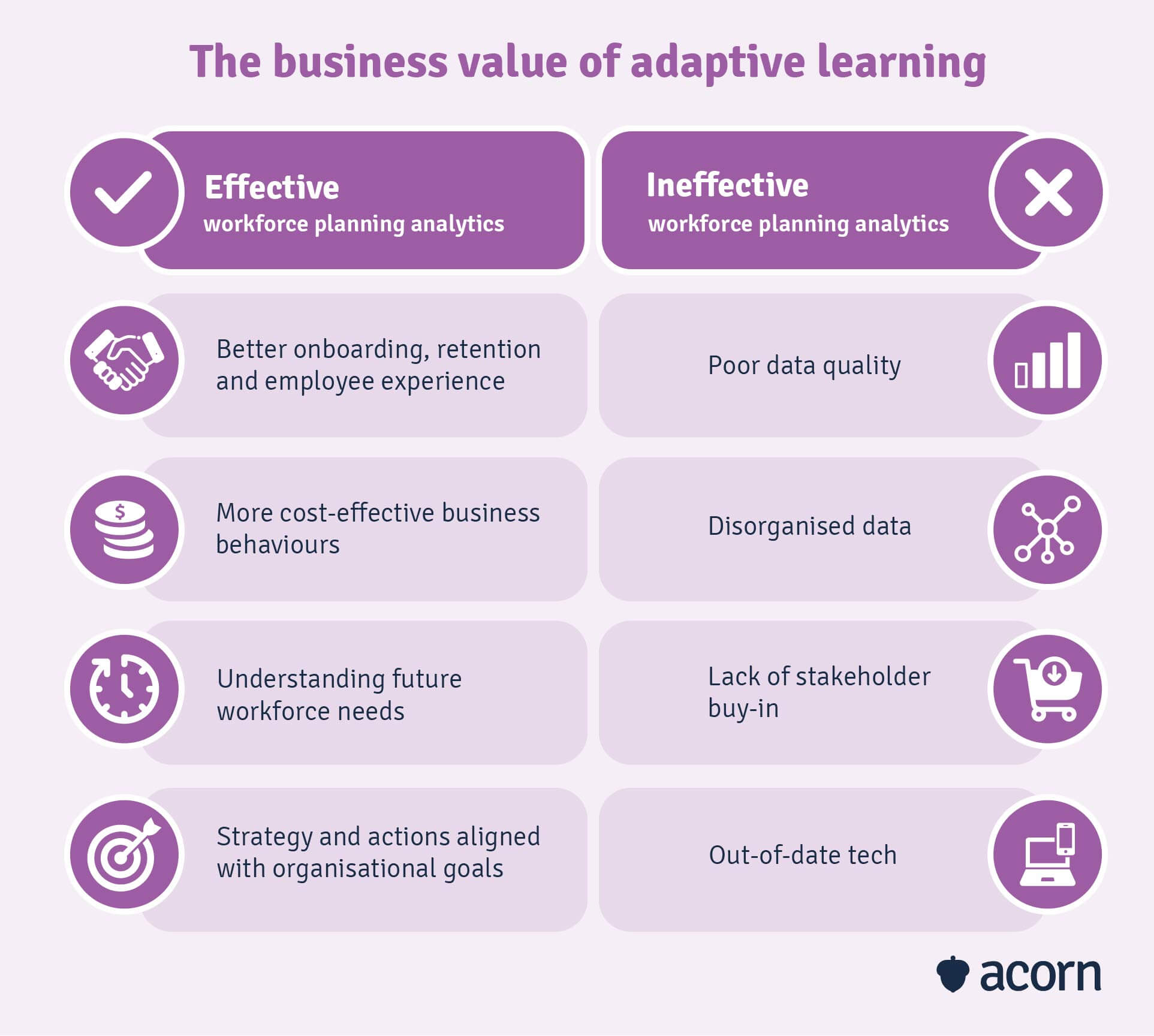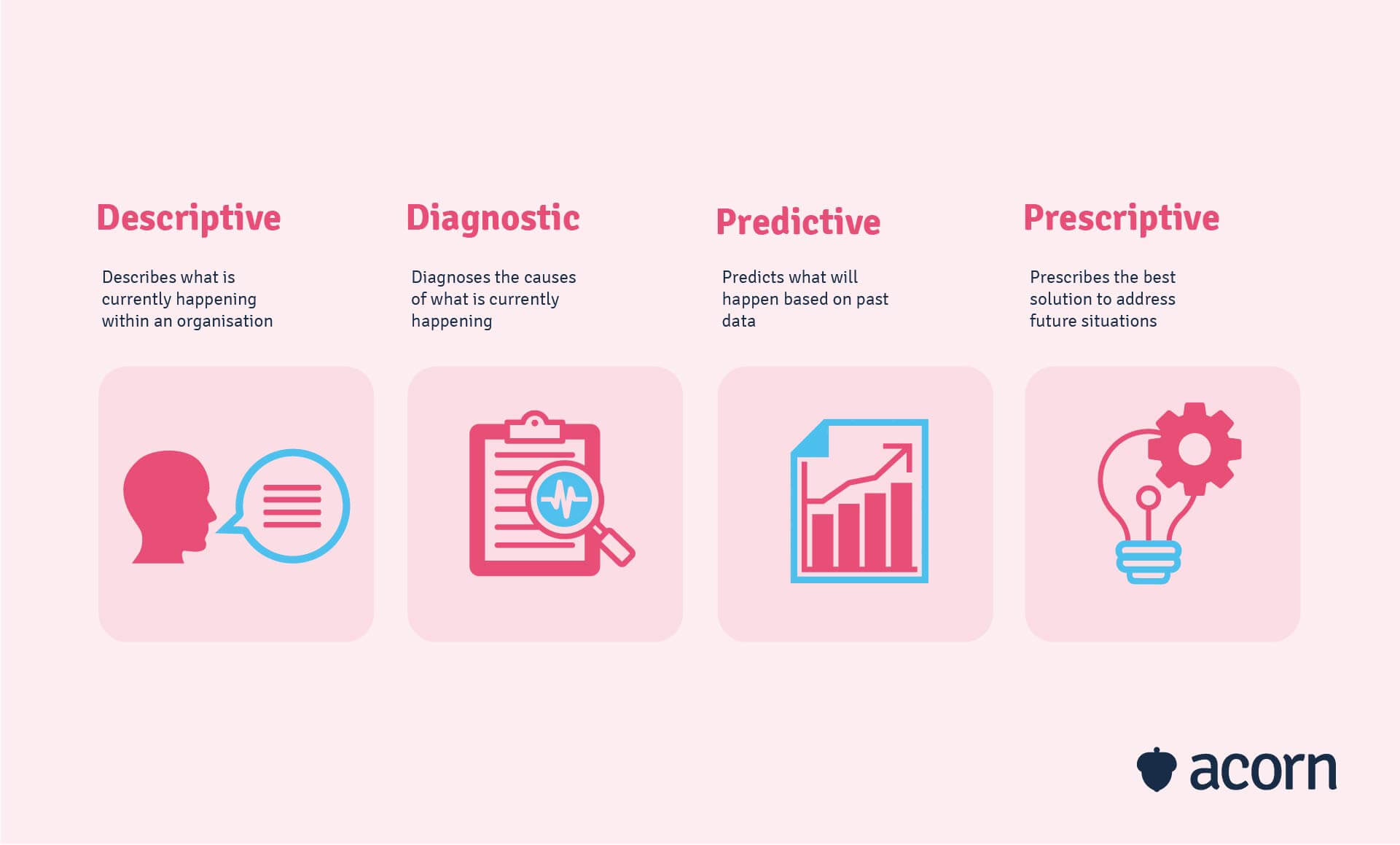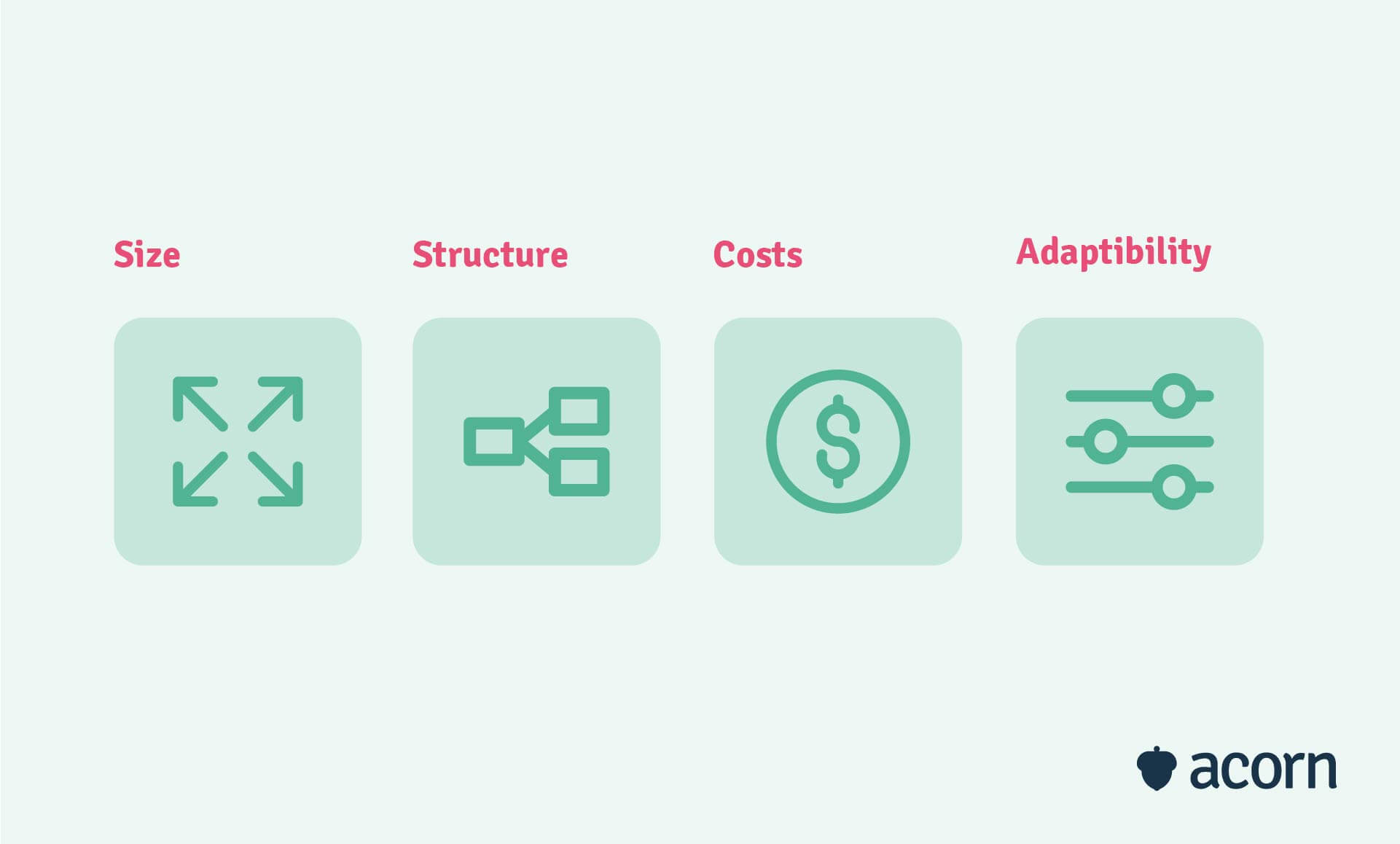Everything You Need to Know About Workforce Planning Analytics
Reading Time:

Lead the pack with the latest in strategic L&D every month— straight to your inbox.
SubscribeWorkforce planning analytics is the crucial tool to making your workforce planning project efficient and effective.
Getting started on workforce planning is a great step towards good business sense. But just because you’ve begun strategic workforce planning doesn’t mean you’re guaranteed to gain success overnight. One key to good strategic workforce planning is utilising the best and most valuable workforce planning analytics.
At its core, a workforce plan is meant to get the right person with the right skills in the right job at the right time. More than that, you want your company to maintain a competitive advantage in the market and ensure that you align HR actions with business strategy. Workforce planning analytics make the gaps, risks and solutions in your workforce more obvious.
But what exactly is workforce planning analytics, and how do you use it in your strategic workforce planning? In this article, we’ll cover the basics of workforce analytics from what it is to what kinds of analytics you should be making use of in your workforce planning process.
What is workforce planning analytics?
Workforce planning analytics gathers and examines data with the goal of advising strategic decision-making in the workforce planning process. It is designed to assist in decision-making and planning that will combat workforce challenges, improve business performance and supply solutions to issues before they arise, with the aim of meeting business objectives.
Why you should use analytics in workforce planning
As we mentioned before, performing workforce planning in your organisation doesn’t guarantee overnight success. You need to make use of the right analytics to ensure you have all the information you need to inform your decision-making process.
In general, workforce analytics is designed to organise and identify patterns in the data, which you can then use to advise strategic and management decisions. And, when you make better decisions for your business, that tends to translate into benefits like:
- Better onboarding, retention and employee experience.
- More cost-effective business behaviours.
- Understanding future workforce needs.
- Strategy and actions aligned with organisational goals.
The pitfalls of ineffective workforce planning analytics
What happens if you don’t take the time to understand and utilise the right workforce analytics, or you don’t use your analytics correctly? If you don’t carry out your workforce planning process properly, your business won’t be in a position to create improvements. In a worst-case scenario, poor workforce planning may even take your business performance backwards.
4 common pitfalls of ineffective workforce planning analytics
- Poor data quality
- Disorganised data
- Lack of stakeholder buy-in
- Out-of-date tech.
So, what are these pitfalls and what makes them bad for your business?
Poor data quality
If you aren’t efficient in your workforce analytics, you could end up with poor quality data that will give you less accurate results and upset the flow of data analysis. Poor data quality can mean a number of things. First, it could mean that the data collected is not accurate, or just doesn’t show anything worth analysing for workforce planning. Second, it could be that you’ve collected your data from an unnecessary or unreliable source.
Disorganised data
A common mistake made by businesses new to workforce planning and analytics is storing and performing everything manually. This inevitably leads to confusion, delays in communication between departments, and unsecured data. On the other hand, when done right, data is centralised and automated (whether digitally or with software), allowing for swifter and easier communication, more comprehensive analysis and a mature “self-service” access for employees.
Lack of stakeholder buy-in
We’ve talked about stakeholders before and the importance of ensuring the buy-in of key collaborators and HR leaders in your workforce planning process. If you don’t make sure the relevant stakeholders are involved, you won’t have the right insight, advice and objectives. And if you don’t have that, then you don’t have the tools to keep stakeholders satisfied or improve your organisation. Identifying key stakeholders and opening a line of communication with them from the beginning allows your workforce analytics and practice to run more smoothly and efficiently.
Out-of-date tech
Using old technology can stunt your organisation’s ability to reach its true potential. Out-of-date technologies will have incompatibilities with new software to help your business grow, including workforce planning and analytics software. You’ll want to make sure your systems are as current as possible to avoid time-consuming upgrades and implementations and instead unlock the true benefits of workforce analytics.

What are the different types of workforce analytics?
If you want good data-driven workforce planning, you don’t want to use just one type of analytics. Different types of workforce data analytics are crucial to help your business identify and meet ever-changing workforce demands now and in the future. There are four different types of analytics that can be used to analyse workforce issues and inform strategic decisions and solutions.
- Descriptive
- Diagnostic
- Predictive
- Prescriptive.

Even companies that don’t participate in workforce planning perform descriptive and diagnostic analytics from time to time. Predictive and prescriptive analytics, however, are what allows workforce planning to really shine.
At Acorn, we pioneered a performance learning management system (PLMS) to keep all the analytics about your workforce, performance, and learning activities in one place, allowing you to measure the efficacy of your workforce planning and L&D initiatives. It’s a dynamic AI-powered tool designed to codify and operationalise the capabilities (the tools, skills, behaviours and knowledge that enable business functions) that drive organisational efficiency.
Descriptive analytics
Descriptive analytics aim to describe the current state of an organisation’s performance. This usually involves analysis of employee turnover, retention and performance, which are important collections of data to have as a jumping-off point for workforce planning. It tends to focus only on gathering the facts and doesn’t delve into possible causes for why the numbers are what they are.
Diagnostic analytics
The purpose of diagnostic analytics is to give context to what you discovered with descriptive analytics. It seeks to analyse and explain the causes of current business data as well as past performance.
Predictive analytics
A predictive analysis helps raise the maturity of an organisation, as it transforms workforce planning from a basic level to a developed one. The main use of predictive analytics is just that: To predict. It uses historical data pulled from your descriptive and diagnostic analytics to determine what is likely to happen in the future of your business. This technique usually looks at aspects such as future employee turnover, skill shortages and surpluses, and changes in the labour market and workforce.
Prescriptive analytics
Following on from the predictive, you can begin with prescriptive analytics. This analytics technique builds on the predictions made based on historical data to determine the best course of action for your business. Essentially, once you’ve predicted what is likely to happen in the future, prescriptive analytics allows you to prescribe solutions to workforce problems pre-emptively.
What are the metrics of workforce planning?
Workforce planning is an effective tool to get the right people in the right jobs at the right time. If you know exactly what metrics to analyse, that is.
AIHR suggests there are four criteria for analysing workforce planning.

- Size
- Structure
- Costs
- Adaptability
So, what exactly are these different metrics that you should be sure to analyse in your workforce planning process?
Business size
Organisations want to use workforce planning to ensure that their business is just the right size. In other words, they want to use people analytics to avoid not only being overstaffed, but understaffed as well. Overstaffing generally means your workforce is working inefficiently, but a workforce that is understaffed will find it difficult to meet its true potential.
Key takeaway
In terms of workforce and HR analytics, you’ll want to look at headcount, the roles your employees fill and employee engagement.
Structure
When you think about the shape—or structure—of your organisation, you’re thinking about human capital and talent management. You need to ask yourself if you have the right capabilities, right skills and right talent needed in your workforce. This can mean not only the capabilities of your current workforce, but also the capabilities your future workforce will need to have in order for your organisation to meet its desired business outcomes and objectives.
Key takeaway
You’ll want to analyse what skills your workforce has and what skills will be needed for the future.
Costs
Now it’s time to look at your costs metrics. This is arguably one of the most important aspects of your workforce planning to get right because if you get it wrong, your organisation could lose money or even go bankrupt. Yet too little, and your organisation will lack the resources to reach its potential. You need to ensure you’re achieving cost efficiency.
Key takeaway
Here, you’ll want to be analysing your costs in terms of labour and resources.
Adaptability
Finally, you need to look at the adaptability of your organisation. What is the ability of your workforce to adapt to the demands of the ever-changing market? What job roles, skills and capabilities will be needed in the future, and is your business prepared to meet those demands?
Key takeaway
You’ll want to analyse what future skills, jobs and capabilities will be necessary for the future, as well as how well equipped your organisation already is to meet those requirements.
Key takeaways
Workforce planning analytics can be a broad and overwhelming topic at first, but once you understand what it really entails, it’s quite simple. Couple that with automated processes for gathering and storing your relevant data for analysis, and you’ll avoid the worst pitfalls of inefficient workforce planning and instead unleash your organisation’s true potential for success.